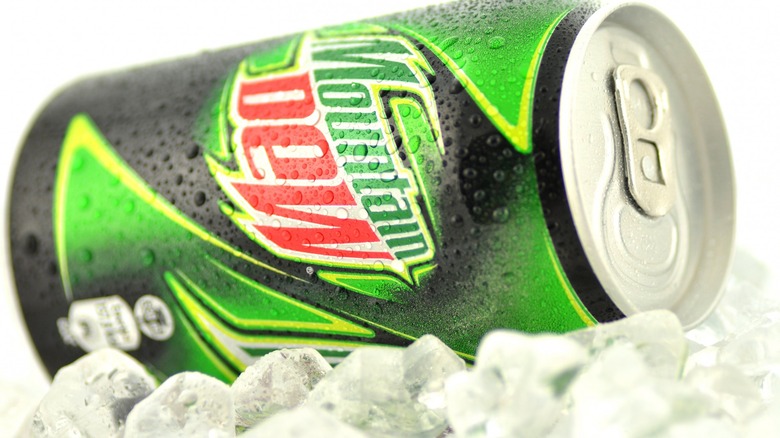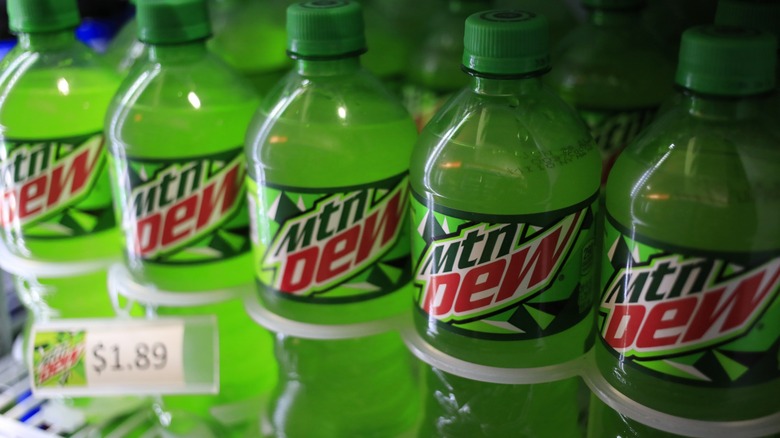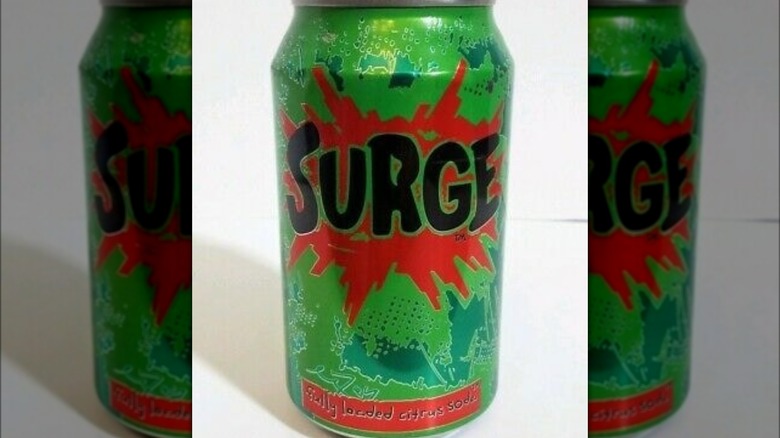Mountain Dew Vs Surge: How Similar Are The Iconic Sodas?
We may receive a commission on purchases made from links.
The 1990s produced a number of iconic elements of American culture. Whether you were growing a mullet or collecting Beanie Babies, if you lived through the 90s, you can confirm that they were a vibe. Younger generations will forever attempt to resurrect trends from this decade. However, it would be impossible to truly revisit this era without popping a can of its quintessential soda — Surge.
Coca-Cola released the citrusy soda in 1997 to go head-to-head with PepsiCo's Mountain Dew. However, Coca-Cola discontinued Surge six years later. Mountain Dew, which came about in 1940, has stood the test of time despite Surge reappearing on the market in 2014 thanks to a campaign launched by fans who missed their beloved soda.
If you look hard enough, you can still get your hands on a case of Surge. It's not as widely available as Mountain Dew, which you'll see pretty much anywhere sodas are sold. Amazon sells cases of Surge and you'll find it at some Burger King locations as well. The two drinks are often compared to one another as they are similar. However, the ingredients in Surge are slightly different from those in Mountain Dew.
Mountain Dew
When seeking a refreshing jolt of energy, Mountain Dew often answers the call as it's a zippy, sweet, fizzy beverage. Newsweek ranked Mountain Dew as the fifth-most popular soda in the United States in 2021. However, Mountain Dew was not always the neon elixir that it is today. The creators originally formulated it as a mixer for whiskey in the mountains of Tennessee. In fact, the term "mountain dew" is another way to refer to moonshine, a high-proof liquor.
When it first hit the market, Mountain Dew was a clear liquid. Today, this soda is famous for its electric green hue that comes from the dye Yellow No. 5. Given its color, people often refer to Mountain Dew as a lemon-lime drink. It doesn't contain lemon or lime, though. Mountain Dew gets that signature citrusy flavor from concentrated orange juice and citric acid, which is a souring agent. Mountain Dew also contains a heap of high fructose corn syrup and 55 milligrams of caffeine per 12-ounce serving. That's more than many of its competitors, including Pepsi and Coca-Cola. When Surge came on the market to compete with Mountain Dew, it included many of the same ingredients. However, there are a few differences in their respective formulas that distinguish these sodas.
Surge
Surge's attempts to be more popular than Mountain Dew were never successful but the soda has a loyal following that maintains it's the superior beverage. Both Surge and Mountain Dew get their flavor from concentrated orange juice and citric acid. They also both contain artificial dyes but Surge has more than Mountain Dew, with Yellow 5, Yellow 6, and Blue 1. Mountain Dew only contains Yellow 5. These extra dyes give Surge a deeper shade of neon green than you'll see in Mountain Dew.
Mountain Dew is one of the most caffeinated sodas out there at 54 milligrams per 12-ounce can. Meanwhile, Surge has slightly less with the equivalent of 51 milligrams per 12 ounces of soda. Mountain Dew also contains more sugar, with 3.5 grams per ounce versus Mountain Dew's 3.8 grams per ounce. The final difference between Surge and Mountain Dew is not in their ingredients but in the sizes you can purchase them in. Surge is only available in 16-ounce cans, while Mountain Dew comes in an assortment of sizes.


